Bonne Zabolotney Teaches Communication Design for Climate Change

Posted on | Updated
The designer and ศซร๑ฒสฦฑ faculty member is asking how design can provide clarity, insights and strategic approaches to understanding โ and combatting โ climate change.
Bonne Zabolotney knew from the beginning that teaching communication design as a tool for helping combat climate change would put her and her students out in the wilderness.
โPrior to running my course this past spring, there wasnโt really a source of โcommunication design for climate changeโ practices that I could just Google and see, โHereโs how other designer educators are doing this,โโ Bonne, a designer and ศซร๑ฒสฦฑ faculty member, tells me.
Students in Bonneโs COMD310 core studio course would have to make their own definitions for the practice of โcommunication design for climate change.โ Fortunately, Bonne says, the students were more than willing.
โAnd the different kinds of communication design that came out of often very similar issues that students were grappling with โ it was pretty astounding. So, we now have a starting point to build up this design practice.โ
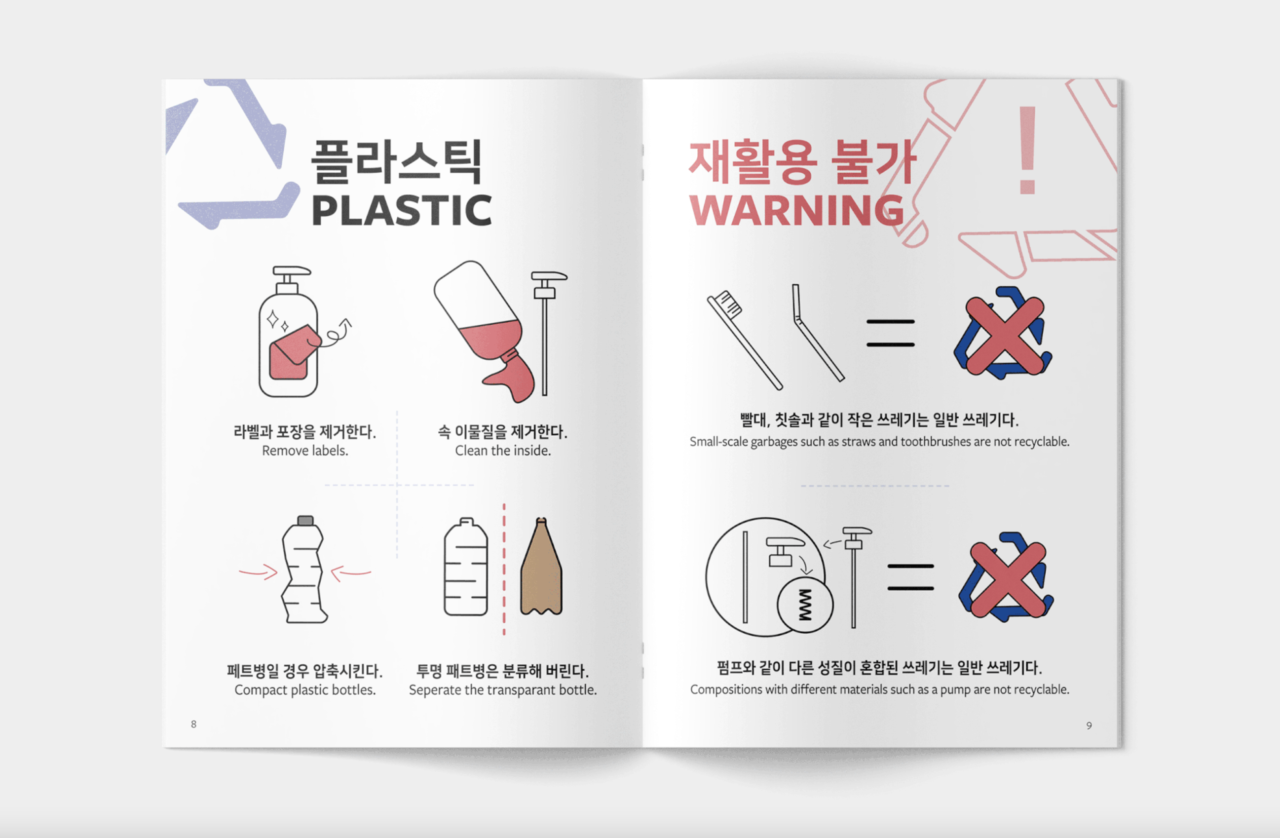
From Anny Lee's Korean Waste Sorting Guidebook, a booklet aimed at helping the elderly in Korea reduce household waste by simplifying the recycling process.
Localism x Globalism
As with any fledgling subject, โcommunication design for climate changeโ held a number of surprises in store for the class. One of the first major revelations came very early on. Bonne had originally intended to focus on โlocalismsโ for the first part of class โ a focus that would see students think about the context of their own, personal world. The second part of the class would deal with โglobalisms,โ meaning those larger systems that are more complex, โwicked problem spaces.โ
But Bonne and her students quickly realized their COVID-safe remote-learning setup meant people were โattendingโ class from all over the world.
โWhile we had a few students in Vancouver talking about systems they could see locally, they had classmates who were touring blue-jeans factories in Pakistan,โ Bonne said. โThe local and the global suddenly became very close, very much closer together than I ever anticipated. It was no longer a binary.โ
This turned out to be a โgift of online teaching,โ Bonne says. Students were able to see their familiar, local contexts through the eyes of classmates living thousands of miles away, and were brought into close contact with ways of life that were unlike their own.
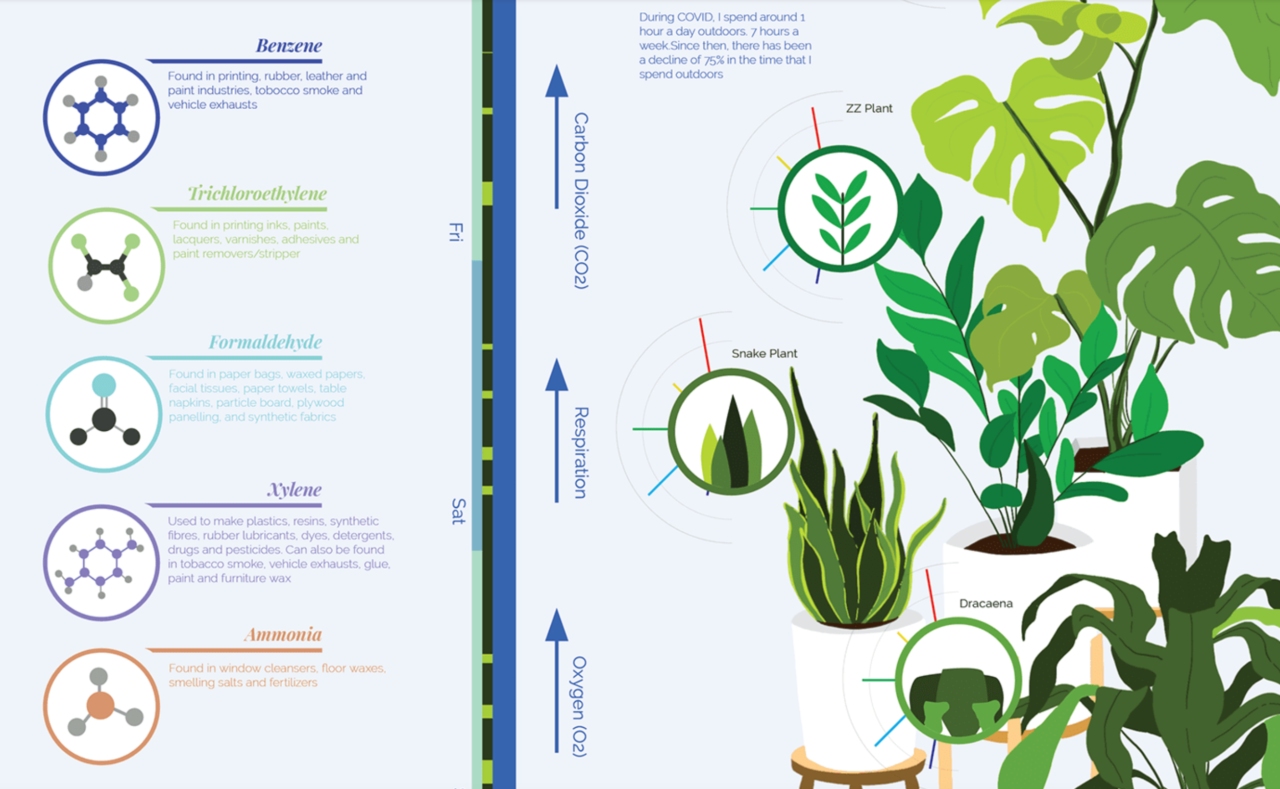
Leo Cho's The Air: Personal Consumption Audit looks at air quality, air's constitutive parts, and how all of it relates to human health.
Personal Consumption Audit
As eyeopening as this experience was, it also risked being somewhat overwhelming, Bonne says. Check-ins were a regular part of the course, as was a more general emphasis on wellness.
โPartly, that meant remembering that weโre third-year communication design students. Weโre not ready to solve all the problems. In fact, this moment can be about making observations and understanding our own participation in a world that is facing climate change.โ
Developing this understanding involved a โpersonal consumption auditโ โ an exercise aimed at helping students focus on one piece of the climate change puzzle that felt both appealing and approachable.
Some students decided to look at the energy consumption represented by screen-time. Others looked at personal water consumption including drinking water, laundry, bathing, gardens and plants. One student, Leo Cho, performed , looking at its quality, its constitutive parts, and how all of it relates to human health.
In each case, the audits saw students identify how meaning can be made of data where it exists, and where ambiguities exist that need clarification. By establishing a clear direction for their design research, students avoid being crushed under the weight of the broader problem of climate change.
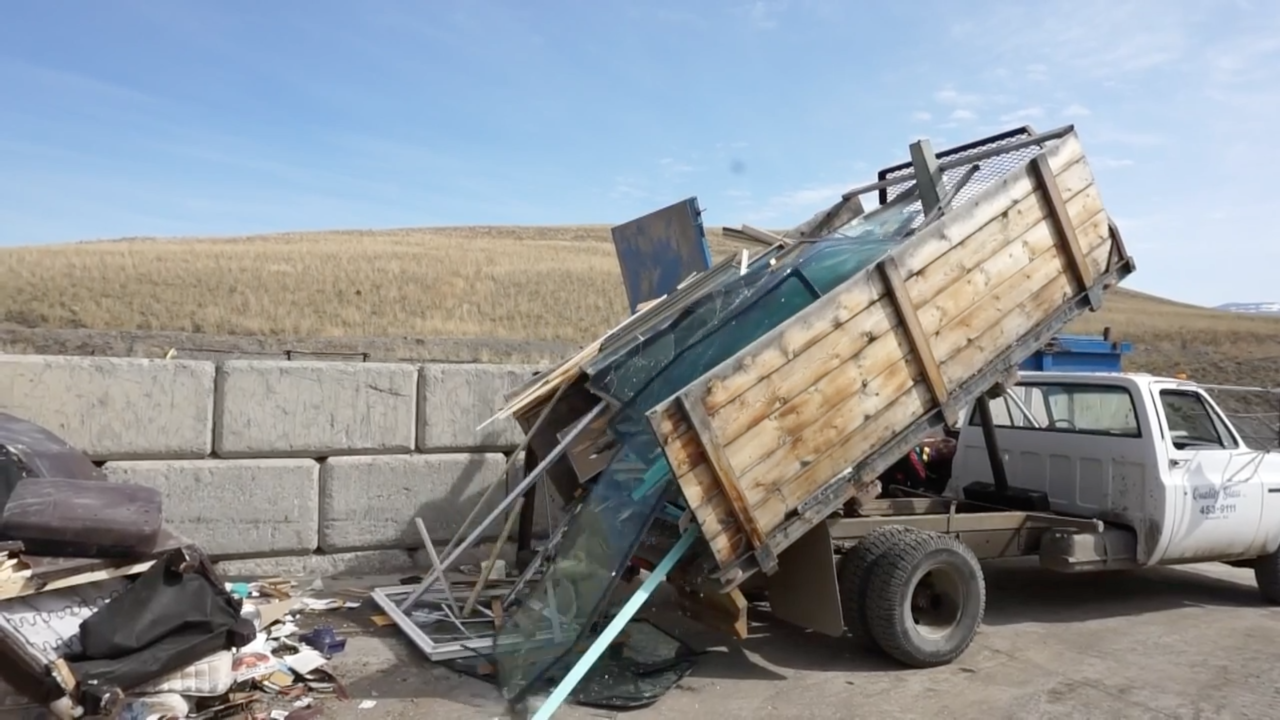
From Hannah Franes' documentary Looking Into Glass, which demonstrates the huge amount of waste generated by her familyโs window-making company in her small hometown.
Daylighting
Bonne notes that the personal consumption audit is not meant to imply that if people simply try hard enough, their individual choices could change the fate of a warming globe.
โI think thereโs enough literature out there around climate change to know that itโs a corporate strategy to place responsibility on individuals,โ Bonne says, โbecause then weโre so busy trying to figure out where to drop off our styrofoam that we donโt question the companies that are manufacturing it. The point of the consumption audit is for students to find an entry point into understanding systems.โ
Nor does a narrowed focus mean ignoring the larger, systemic forces at play. She points to the language around civic recycling programs as an example of an issue that is both approachable and symptomatic of the larger issues around climate change.
A typical city webpage about recycling might show a classic three-arrows diagram, with a sentence noting, โWe get rid of anything thatโs not clean.โ But Bonne says a huge number of questions cascade down from that statement once itโs probed even superficially.
โFirst of all, what does it mean to โget rid ofโ something thatโs not clean?โ Bonne asks.
โThat seems like a huge flaw in the process. Itโs easy for things not to be clean in a city with a million people recycling their yogurt containers every day. And then what, exactly, does โnot cleanโ mean? As communication designers, weโre looking to daylight out these problems a little bit, and interrogate them further.โ
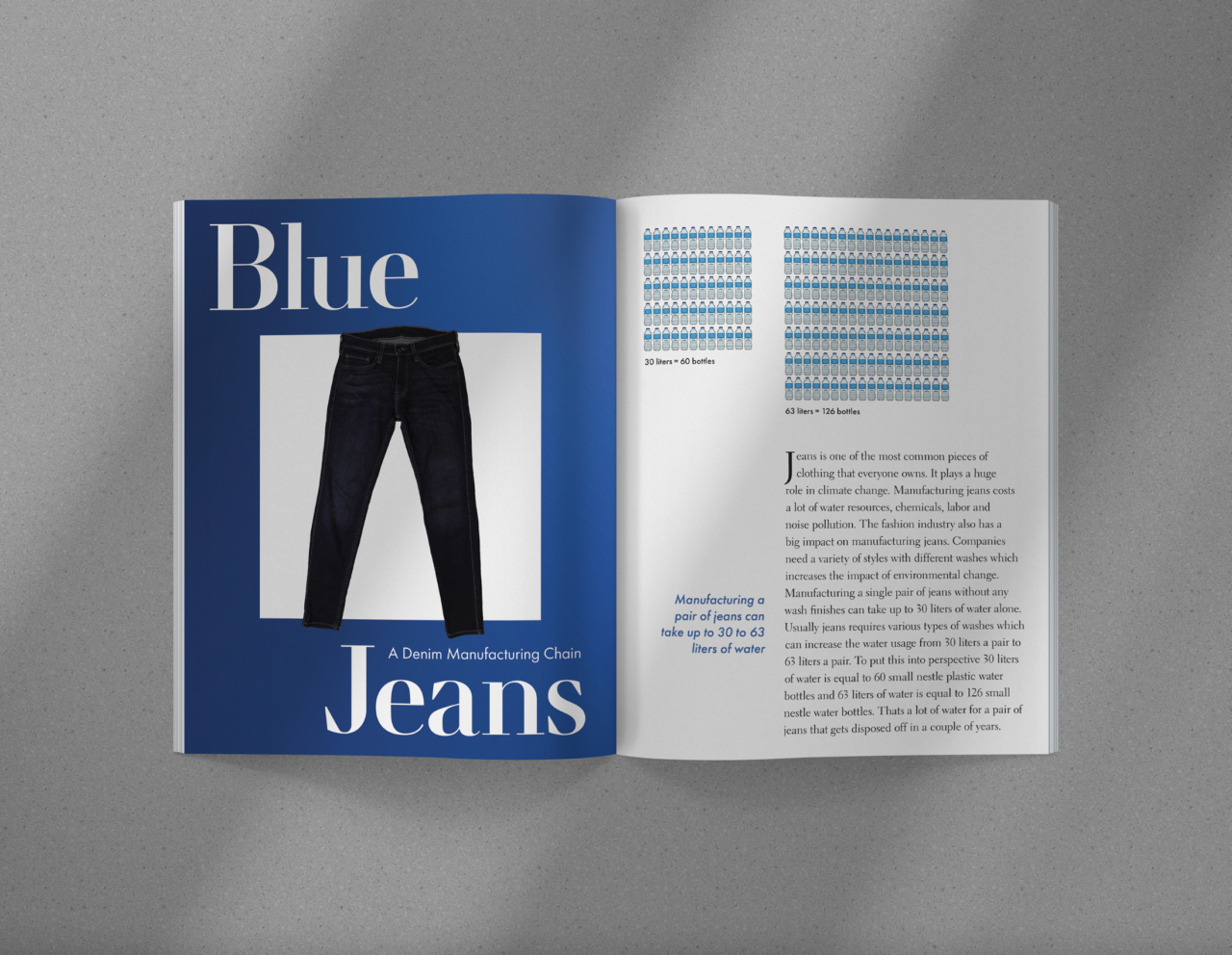
From Zara Imran Hassan's project Blue Jeans: A Denim Manufacturing Chain, which explores the social and ecological costs of the denim industry.
Tussle with What It All Means
As Bonne had hoped, โdaylightingโ meant very different things for each of her students.
Student designer Zara Hassan looked at , using photos she took personally during a visit to a factory in her hometown of Karachi, Pakistan. Zaraโs classmate, Anny Lee, by simplifying the recycling process.
Owen Xu created by spotlighting the environmental harms of the industry, and offering solutions for how to help mitigate them. And student Hannah Franes developed in her small hometown.
Bonne emphasizes that communication design, especially as it relates to climate change, doesnโt necessarily have to solve every problem it identifies.
โWeโre here to make processes more transparent; to call into question how these processes are being represented, which creates space for other designers to say, โWhat is it that we should be doing? What should we be knowing? What effect is our work having on consumers, on manufacturing, on recycling?โ Bonne tells me.
โAs communicators, we try and puncture holes in these representations to bring the underlying issues to light, so we can tussle with what it all means.โ
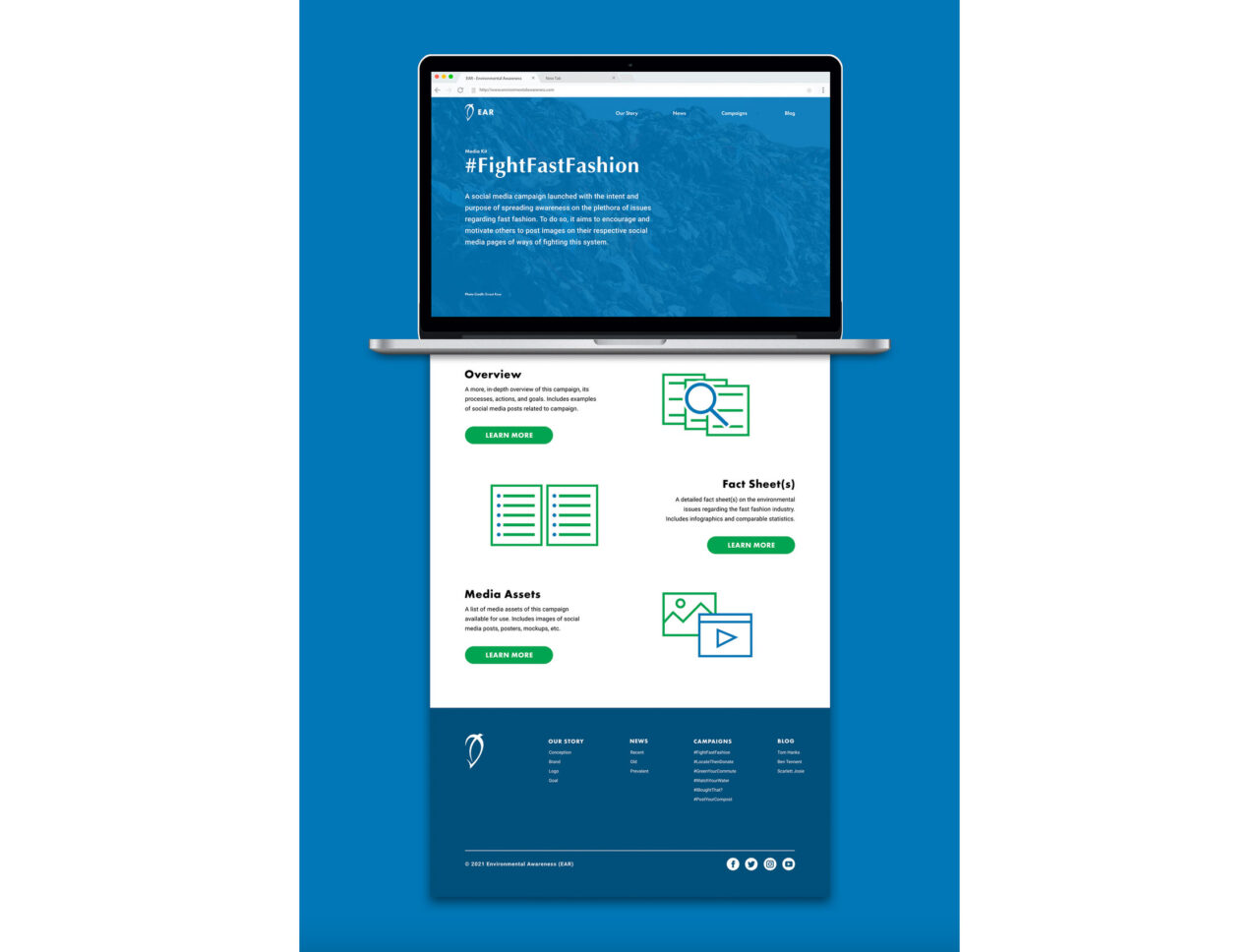
From Owen Xu's Anti-Fast Fashion media kit, aimed at problematizing and offering solutions for waste generated by the fast fashion industry.
Prototyping
That ability to expose underlying issues is one Bonne would like to see designers hired for more often. Designers are more than just aesthetes who can make something look good, or help make a marketing campaign more effective. Designers are also skilled investigators who can understand complex systems and the consequences wrought by minute changes within those systems. Theyโre also natural deep-diggers, with a passion for nuance and detail.
โWe want our students to learn to be excellent communicators who can, in fact, also be excellent researchers,โ Bonne says. The trick, then, is to encourage institutions and organizations to take advantage of those research abilities.
โFor a city to have a design researcher on staff โ thatโd be pretty amazing. Or to have a designer who works with policies, because policies are simply written practices. We can prototype policies and anticipate their impacts and map them and design them or probe them.โ
The first step, Bonne says, is to spur wider interest in communication design for climate change. With that in mind, sheโs reached out to colleagues both in Australia and the United States in the hopes of sparking collaboration.
โWe need to expand the respect and understanding about what communication designers are capable of, and that would include working in policy, working in non-aesthetic ways,โ she says.
โUntil we establish this as a practice, weโll make mistakes. Weโre still prototyping, though, and watching for when it really starts to develop insights.โ
Bonneโs COMD310 Communication Design for Climate Change course will be taught again in Spring, 2022.